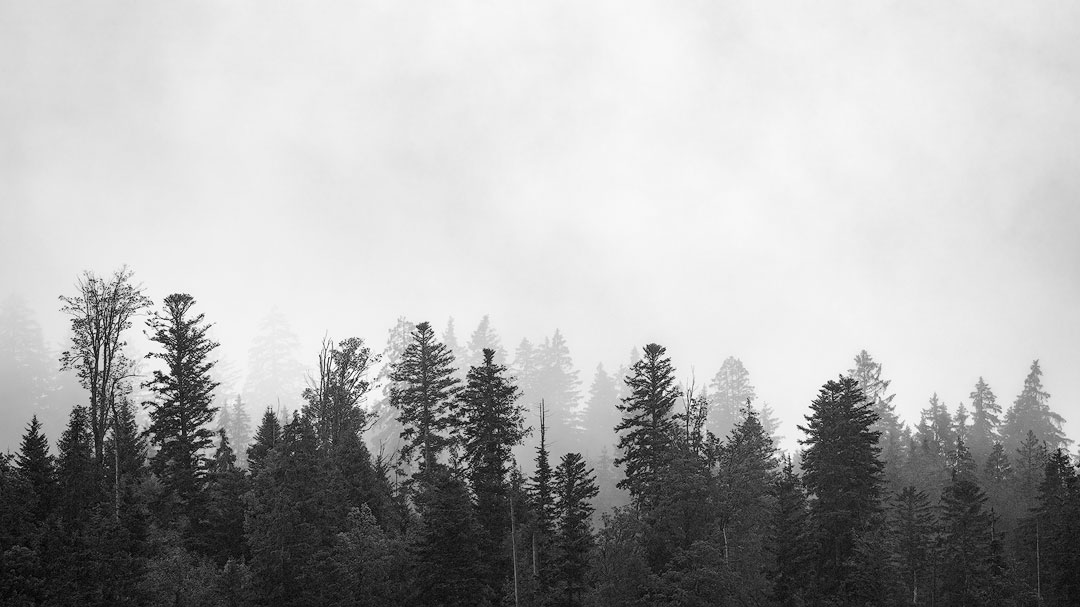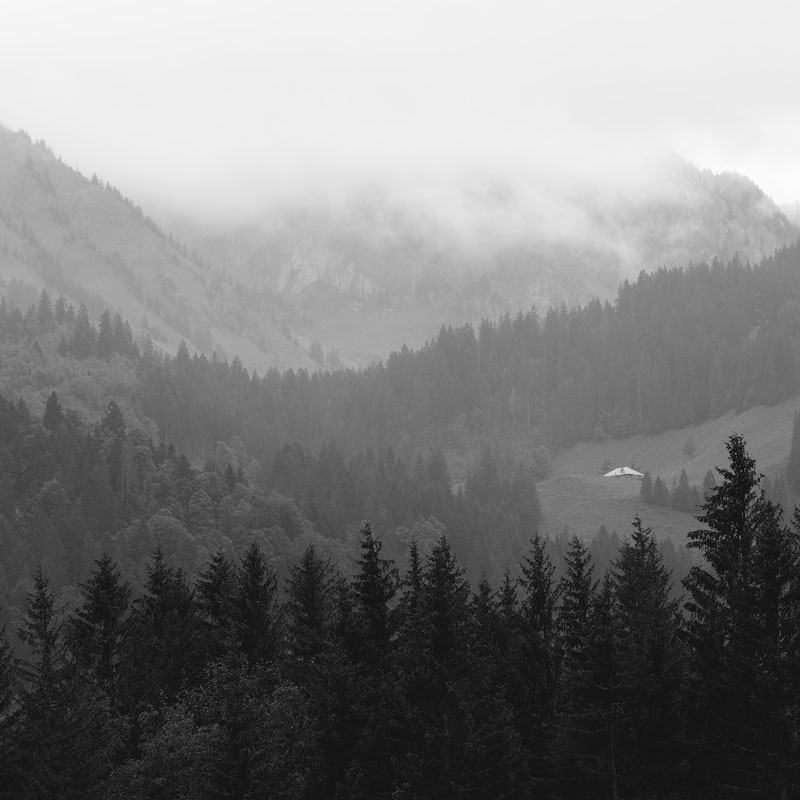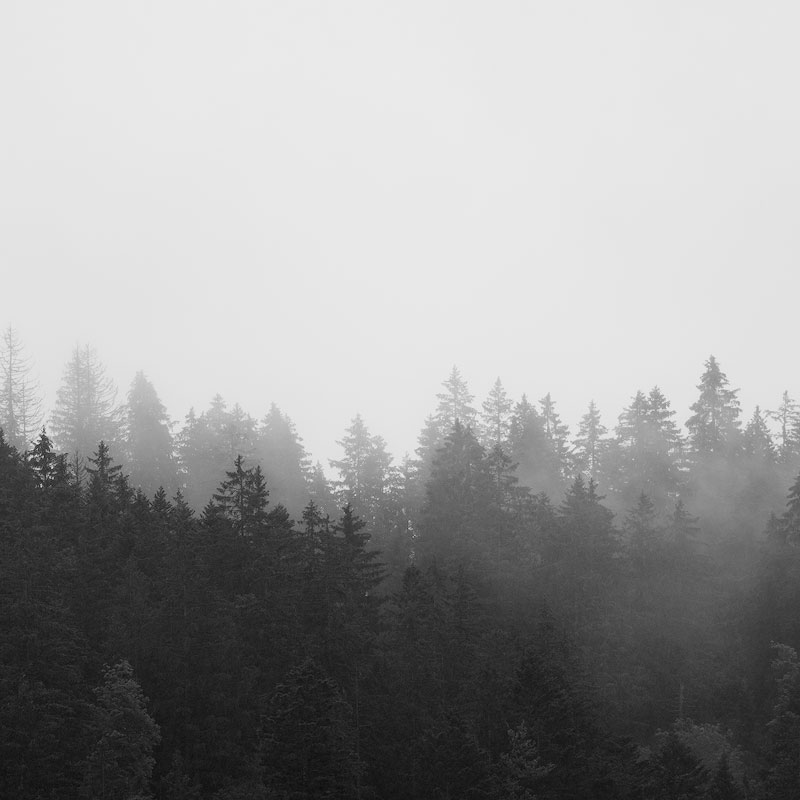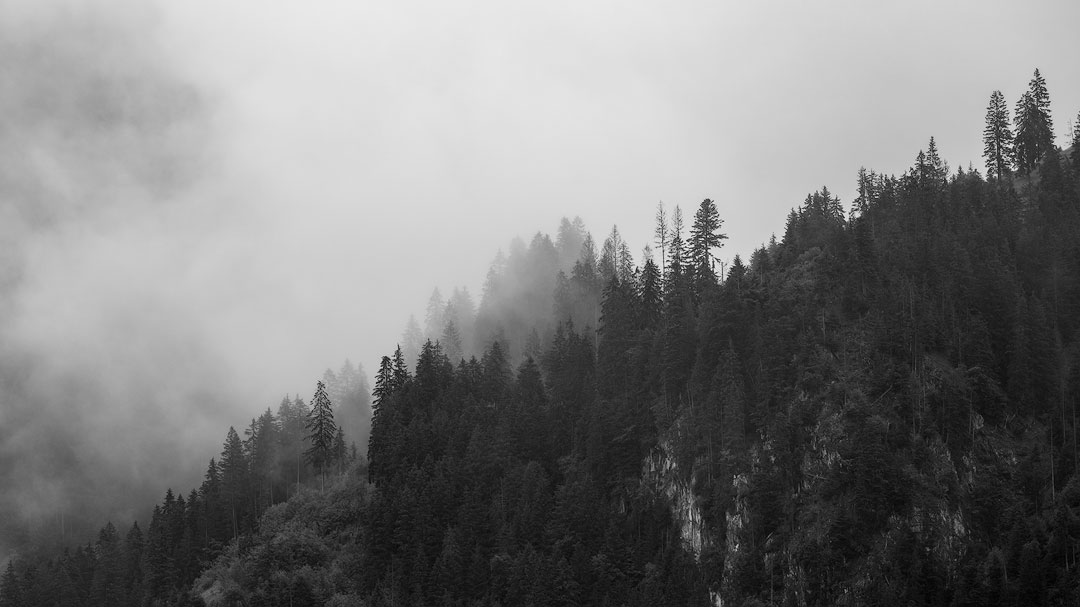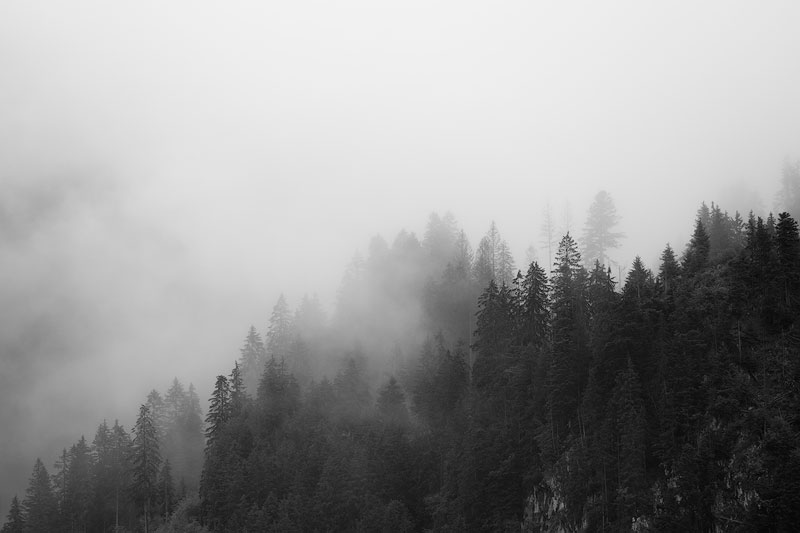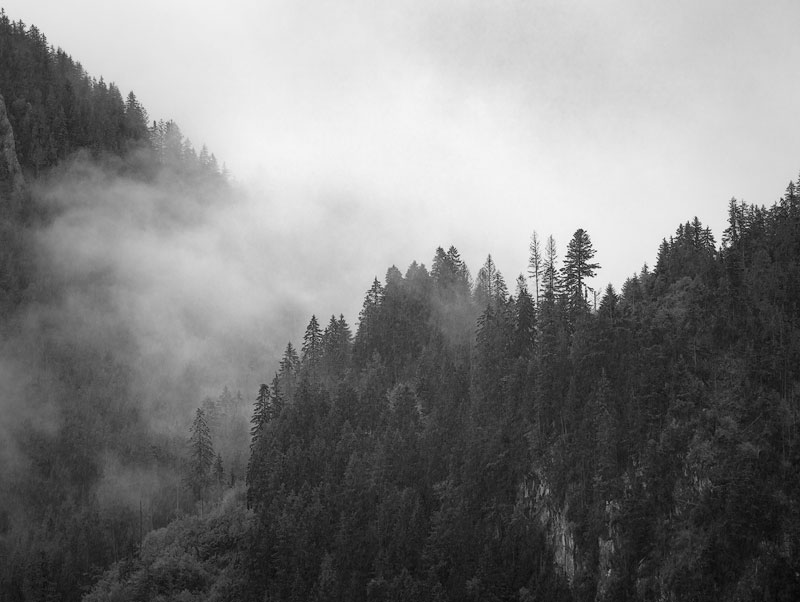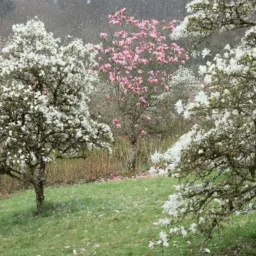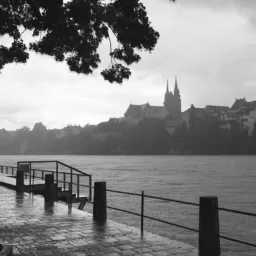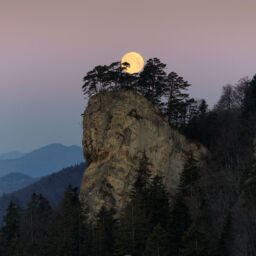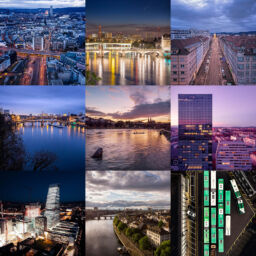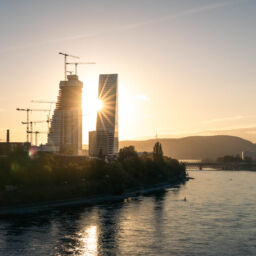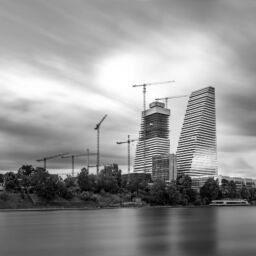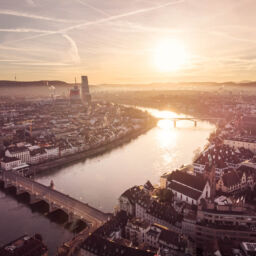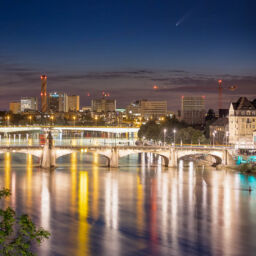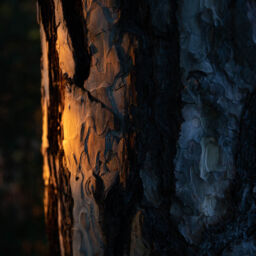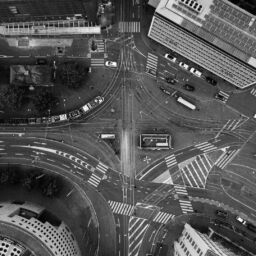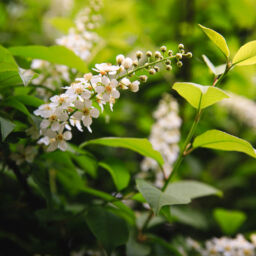Introduction
Have you ever wondered if it is worth it trying to photograph in bad weather? Last Summer, my wife and I spent some time in the canton of Fribourg in Switzerland. Unfortunately (?), the weather was not always nice. We travelled to Schwarzsee to stay in the area for a couple of days, and as soon as we arrived it started pouring down. So, what to do under such circumstances?
At least in this instance, I did not let the weather stop me and looked around for motives to photograph nonetheless. Admittedly, I did so from the rain covered balcony of our hotel. But hey: if I can get nice pictures without getting soaking wet you don’t have to ask me twice what I’ll be doing.
In this blogpost, I’ll share a set of images which were shot during a heavy downpour in a short timeframe. Maybe they can serve as inspiration should you ever be in a similar situation?
Look around you
Look around you and note how the landscape changes under these conditions. In my case, pretty much all the colors were gone. Using black and white was therefore the obvious decision for me.
Also, I was fortunate enough to have my telephoto lens with me. This allowed for very selected compositions picked from the drenched and foggy mountain scenery around me. Don’t be fooled into thinking wide-angle lenses are the only way to go for landscape photography. You will find very nice compositions using a telephoto!
Changing Atmosphere
Bad weather is not all the same. It can be absolutely dull and boring, or it can bring ever-changing atmospheric conditions. As you can appreciate in all of these images, fog and clouds are vital elements, together with the pouring rain. They create distinctive layers in the mountains and the forest trees.
Take your time
When fog and clouds are very dynamic, there is no need to change your composition all the time. Observe how the moving elements alter your image in a matter of seconds. In fact, all images in this blogpost were shot within a timeframe of 20 minutes, some of them only minutes apart!
If you look closely at the two last images of this blogpost, you will notice that they contain the same mountain ridge as the image before. The clouds which are pushed through the mountains lead to subtle, but also bigger changes. In one, a whole mountain side is gone!
And this is probably the most important aspect to me. You can go where everyone else goes, stand in the same place, take the same image. Which is of course perfectly valid and will likely results in a nice image, which you can share with your friends, who took the very same image.
However, under these ever-changing atmospheric conditions every image will be different! It’s highly unlikely that someone else can recreate the same image on a different day – even in bad weather. What are the odds, that the clouds are pushed through the mountains the same way? Showing exactly the same parts of the landscape, obfuscating the same group of trees or hiding them altogether? And this is, where you can get not only a different image, but certainly a unique one!
Wouldn’t you agree that this is a great upside of photographing in bad weather? I certainly think so.
Conclusion
Hopefully I convinced you with these images, that bad weather does not necessarily mean bad photographs. If you accept the circumstances, you can get great results which are different and unique.
If you are into images under rainy conditions, you may like my story of a rainy day in Basel (which is written in German). Or maybe you have questions or your own insights? Please leave a comment down below and I’ll make sure to answer as soon as I can.


